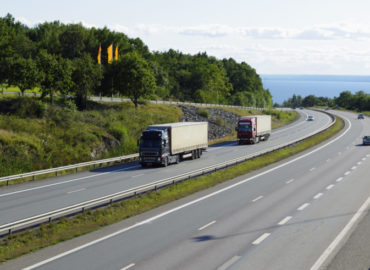Many people consider Baltimore to be a great place to live in. The largest city in Maryland offers diverse neighborhoods to choose from. It’s rich in history and seafood too. So, it’s really no wonder why you’d want to move there.
However, as with anywhere else, Baltimore has its good sides and its bad sides. You might love everything that makes the city great, but are you ready to deal with the disadvantages of living in Charm City too? Here’s what you should know before moving to Baltimore.
Cost of Living
If you’re single and plan to relocate to Baltimore, you’ll need to make a salary of $84,989 to be able to “live comfortably” in the city, according to a recent study by Smart Asset, a financial technology company. This translates to an hourly wage of $40.86.
Obviously, if you’re married and have children, the cost will be higher. The study notes that a family of four, where dad and mom works and they have two children, would have to have a combined salary of $218,733 for them to live comfortably in Baltimore.
These figures are lower than the national average, but not by a lot. A single individual would need, on average, $96,500 to have a comfortable life in a major U.S. city. Meanwhile, a family would need a combined income of about $235,000. The study defines “living comfortably” as living without the pressure of subsisting paycheck to paycheck.
High Housing Cost and Rental Rates
In Baltimore, those looking to own a house face two major problems: price and availability.
Maryland Realtors noted that the state’s housing inventory is low. In particular, monthly listings in 2023 dropped significantly. For instance, there were 9,900 listings in July 2022 but only 6,491 in July 2023.
This low housing inventory especially affects individuals with lower to moderate incomes, who along with seniors and individuals who have special needs, have fewer homes available to them, according to a recent survey by independent polling firm American Strategies, conducted in behalf of Maryland Realtors.
Add to this how quickly home buyers are snatching up houses for sale. It only takes about seven days before a house sale turns pending, compared to the median of eight days in 2022. On real estate marketplace Zillow, sellers reach this status within a median of six days.
The Greater Baltimore Board of Realtors say this hot housing market has driven July 2023’s median price ($290,000) over the city’s five-year average of $266,980. The price increase results in a house that costs too much, according to 82% of Marylanders surveyed by American Strategies.
Rent is a little better. But, despite a slight decrease (0.03%) in the median price of an apartment in the Baltimore metro in February 2024 to $1,982 per month, 81% of Marylanders polled by American Strategies still think rates are too high.
Pay Attention to Your Taxes
If you move to Baltimore, you’ll be paying a state income tax (2%), a county income tax (2.25%-3.20%), a sales tax (6%) and gas taxes.
In addition, there’s also a property tax, which has an average effective rate of 0.988% in Baltimore, higher than what other Marylanders pay. For instance, in 2022 and 2023, the city’s total listed tax rate was $2.248 per $100 of assessed value. This rate may also increase for homeowners who don’t receive tax credits.
Plenty of Employment Opportunities
Baltimore, being close to the nation’s capital, offers many employment opportunities in different industries. So, finding a job here shouldn’t be a problem, even for new graduates.
Among the city’s top employers are Johns Hopkins University and Johns Hopkins Hospital, along with Exelon and the University of Maryland Medical System. Aside from higher education and healthcare, jobseekers will find plenty of opportunities in the bioscience, government, tech, cybersecurity, IT, defense contracting, financial services and sports.
Many Transportation Options
Baltimore is centrally located on the East Coast. It’s just off Chesapeake Bay, and a few hours’ drive to Philadelphia, New York and Washington, D.C. Paired with this central location is the availability of several public transport options (below), which means it’s easy to get around the city and nearby places.
- Metro SubwayLink – Operated by the Maryland Transit Administration (MTA), it connects the northwestern suburbs to downtown.
- Light RailLink – A system of aboveground rail lines that stretch for 27 miles.
- MARC Train – A commuter rail system servicing Washington, D.C., Harford County, Brunswick and other nearby areas.
- Penn Station – A historic terminal which is the eighth-busiest Amtrak station in the country.
- Charm City Circulator – A free shuttle with four routes in the city’s central business district.
- Local buses
- Uber, Lyft, taxi
- Water taxi
Seek Safe Havens
Baltimore was ranked by personal finance website MoneyGeek as the sixth most dangerous city in the country. The ranking was made for 302 cities with more than 100,000 population.
However, most of these crimes occur in neighborhoods with gangs or those that deal with poverty and drug issues. These neighborhoods include West Baltimore, Fairfield and Middle East. On the other hand, areas like Fells Point, Federal Hill, Mount Vernon and Inner Harbor where there are tons of tourists or where the rich and affluent live are less likely to experience crimes.
Watch Out for Baltimore Weather
People new to the city will soon find out that summers here are hot (75°F average) and humid, while winters are harsh.
The city enjoys an average of 213 sunny days annually. While summers are hot, Baltimoreans do get some breeze from the coast or get cool in the beaches and pools. Other than swimming, most refrain from going outside for long periods because of mugginess.
Baltimore winters, on the other hand, come with cold temperatures and frequent snow and ice storms. Temperatures can drop below freezing, sometimes as low as under 20°F.
Beyond summer and winter, the rest of the year sees an average temperature of 30 to 80°F. The best times, weather-wise, are from April to May and September to early October.
Get Used to the Slang
Hon’, which is short for honey, is a common endearment you’ll hear in the city. Baltimoreans also have this habit of dropping the “t” sound when they speak. So, water becomes “wooder” and Baltimore becomes “Bawlmer.”
They might also talk about the power plant, but that’s not the electric power plant you might have in mind. When a Baltimorean says power plant, that typically means the Power Plant entertainment venue.





